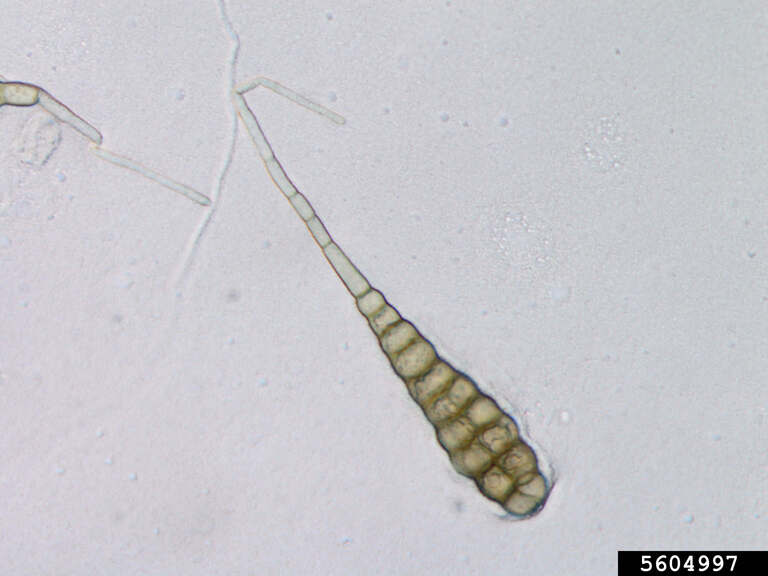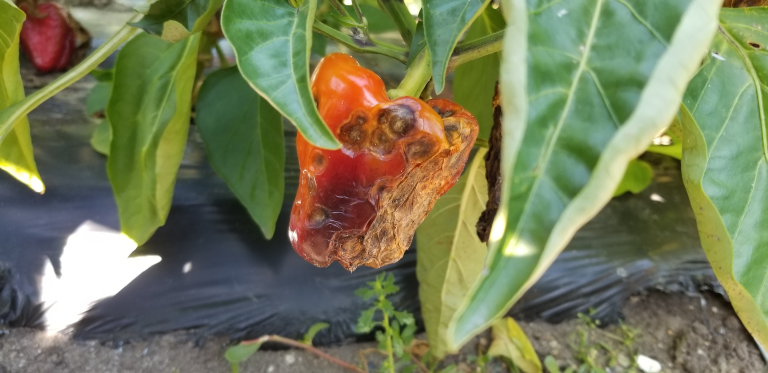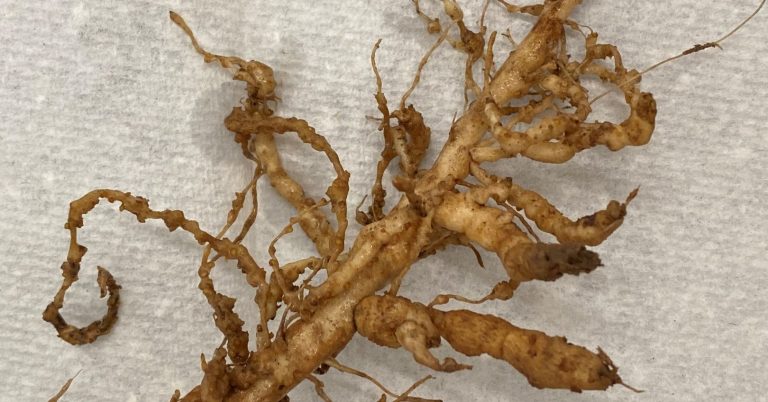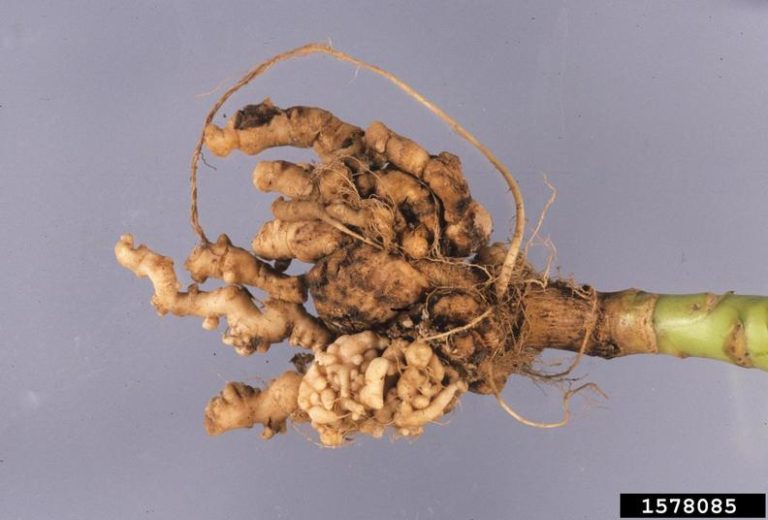Introduction
Alternaria leaf spot is a common and destructive disease affecting cruciferous crops, including cabbage, cauliflower, broccoli, and mustard. This disease is caused primarily by two fungal species: Alternaria brassicicola and Alternaria brassicae. Both pathogens are closely related but differ in their morphological, pathogenic, and epidemiological characteristics. They are particularly problematic in Nepal, where brassica crops are a staple for many farming communities.
The importance of managing Alternaria leaf spot lies in its potential to cause yield loss and reduce the marketability of crops due to the unsightly lesions it creates. These losses are significant in countries like Nepal, where smallholder farmers heavily depend on these crops for both income and subsistence. The growing conditions in Nepal, particularly in the Terai and mid-hill regions, can provide an ideal environment for the proliferation of these pathogens.
This blog post provides a comparative overview of the two causative agents, A. brassicicola and A. brassicae, focusing on their introduction, conditions favorable for disease development, disease cycle, and integrated disease management practices.
Taxonomical Classification
| Taxonomic Rank | Alternaria brassicicola | Alternaria brassicae |
|---|---|---|
| Domain | Eukaryota | Eukaryota |
| Kingdom | Fungi | Fungi |
| Phylum | Ascomycota | Ascomycota |
| Class | Dothideomycetes | Dothideomycetes |
| Order | Pleosporales | Pleosporales |
| Family | Pleosporaceae | Pleosporaceae |
| Genus | Alternaria | Alternaria |
| Species | Alternaria brassicicola (Schwein.) Wiltshire | Alternaria brassicae (Berk.) Sacc. |
| Synonyms | Alternaria concentricum (Speg.) | Macrosporium brassicae (Berk.) Sacc. |
A Brief Overview of Alternaria brassicicola and Alternaria brassicae
- Alternaria brassicicola is widely known for causing dark, necrotic leaf spots, which primarily affect the leaves and stems of cruciferous plants. It thrives in warm and humid conditions and can lead to severe defoliation if left unmanaged.
- Alternaria brassicae, while similar in appearance and pathogenicity, tends to have a broader host range and can infect more diverse brassica species. It produces slightly larger lesions and is known for its ability to persist on crop residues and seeds.
Comparative Characteristics of Alternaria brassicicola and Alternaria brassicae
While both A. brassicicola and A. brassicae cause similar symptoms in their host plants, a closer look at their morphological and pathogenic characteristics reveals several differences that are important for diagnosis and management.
Morphology and Spore Structure
- Conidia:
- A. brassicicola produces dark-colored conidia that are muriform (divided by both transverse and longitudinal septa). They are shorter and more rounded compared to those of A. brassicae.
- A. brassicae conidia are typically larger, longer, and more ellipsoidal in shape. The septations are distinct, and the conidia have beak-like extensions that aid in dispersal.
- Colony Morphology:
- Colonies of A. brassicicola on culture media appear dark olive to black, with a velvety texture. Its growth rate is slightly slower than A. brassicae.
- A. brassicae colonies exhibit a light olive to dark brown color, with a fluffy or cottony texture. This species tends to produce more aerial mycelium compared to A. brassicicola.
Pathogenicity and Host Range
- A. brassicicola primarily targets the leaves, although it can occasionally infect stems and seed pods. It has a somewhat restricted host range, predominantly affecting crops within the Brassicaceae family, such as cabbage (Brassica oleracea var. capitata) and cauliflower (Brassica oleracea var. botrytis).
- A. brassicae has a wider host range and is capable of infecting a broader array of cruciferous plants, including mustard (Brassica juncea) and rapeseed (Brassica napus). It can cause more extensive damage, affecting not only the leaves but also the stems, flowers, and seed pods.
Epidemiology and Spread
Both pathogens are spread primarily through air-borne conidia and can be disseminated over long distances via wind. However, A. brassicae is considered more aggressive, spreading faster under optimal conditions and causing more widespread epidemics.
Symptoms
Here is a comparative analysis of the symptoms caused by Alternaria brassicicola and Alternaria brassicae in cruciferous crops, focusing on the differences and similarities in symptom expression.
| Symptom Aspect | Alternaria brassicicola | Alternaria brassicae |
|---|---|---|
| Lesion Size | Smaller, typically 1–5 mm in diameter | Larger, can reach up to 10–20 mm in diameter |
| Lesion Shape | Round to irregular, smaller concentric rings | Round to oval, with distinct concentric rings (target-like) |
| Lesion Color | Dark brown to black | Light brown to gray with a darker brown border |
| Concentric Rings | Less pronounced, especially in early stages | Highly pronounced concentric rings, forming a “bullseye” pattern |
| Affected Plant Parts | Primarily leaves, stems, and seed pods (less frequent) | Leaves, stems, flowers, and seed pods (more aggressive spread) |
| Leaf Spot Distribution | Often starts on the lower leaves and moves upward | Affects all leaf layers; can appear on younger leaves first |
| Secondary Effects | Moderate leaf drop and necrosis; not as aggressive as A. brassicae | Severe defoliation, leaf drop, and stunted growth |
| Symptom Progression | Slower progression; symptoms develop over a longer period | Faster progression, especially under favorable conditions |
| Spores on Lesions | Dark conidia form on the leaf surface in dense clusters | Lighter-colored spores appear on lesion surfaces; more widespread |
| Affected Crops | Mostly cabbage, cauliflower, broccoli | Broader host range: cabbage, cauliflower, broccoli, mustard, and rapeseed |
| Symptom Severity | Generally causes moderate to severe yield losses in humid conditions | Often causes severe yield losses in regions with high humidity |
| Post-Harvest Symptoms | May cause black spots on stored leaves and seed pods | Can cause significant storage decay, especially in seed pods |


Source: Plant Disease Identification
Key Differences:
- Lesion Size and Shape: A. brassicae tends to produce larger and more distinct lesions with highly visible concentric rings, while A. brassicicola causes smaller and darker spots.
- Severity and Progression: A. brassicae is generally more aggressive, resulting in more rapid symptom progression and greater crop damage than A. brassicicola.
- Affected Plant Parts: While both species can infect leaves and stems, A. brassicae is more likely to cause damage to flowers and seed pods, which can lead to greater yield loss in seed-producing crops.
Similarities:
- Both pathogens cause necrotic spots on the leaves, which can coalesce in severe cases, leading to complete leaf necrosis.
- Both species are capable of causing premature leaf drop, which reduces photosynthetic capacity and overall crop health.
- Environmental conditions, particularly high humidity and warm temperatures, are critical for the development of both diseases.
Disease Cycle of Alternaria Leaf Spot
The disease cycle of both Alternaria brassicicola and Alternaria brassicae follows a similar pattern of spore dispersal, infection, symptom development, and overwintering. However, there are subtle differences in their epidemiology and aggressiveness that influence disease management. Below is a detailed breakdown of the disease cycle, highlighting the important phases:
Source: ResearchGate
1. Primary Inoculum
- Overwintering Structures:
- Both A. brassicicola and A. brassicae overwinter as dormant spores (conidia) or mycelium in infected plant debris, seed pods, or in the soil.
- Infected Seeds: Infected seeds serve as an important source of primary inoculum, particularly for A. brassicae, which is more likely to persist in seeds compared to A. brassicicola. This makes seed-borne infections more problematic in A. brassicae.
- Survival in Debris: Crop residues left in the field after harvest provide a reservoir for both pathogens to survive between growing seasons.
2. Spore Dispersal
- Conidia Formation:
- Both species produce conidia (asexual spores) on infected plant tissues, typically on lesions that form on leaves, stems, and seed pods.
- A. brassicae produces more abundant and larger conidia compared to A. brassicicola. Conidia are generally dark-colored, multicellular, and muriform (with multiple transverse and longitudinal septa).

Source: Wikipedia

Source: Center for Invasive Species and Ecosystem Health
- Dispersal Mechanisms:
- Wind-Borne Spores: The primary means of dispersal for both A. brassicicola and A. brassicae is through wind-borne conidia. These lightweight spores can travel long distances, infecting plants in new fields.
- Rain-Splash Dispersal: Rain splash is also an important dispersal mechanism, particularly in areas where overhead irrigation or frequent rainfall occurs. This form of dispersal is more localized but can lead to rapid disease spread within a field.
- Human Activity: Infected plant debris or seeds can be transported by human activities (farming equipment, contaminated seeds, etc.), further spreading the pathogen.
3. Germination and Penetration
- Spore Germination:
- When conidia land on the surface of a susceptible host plant, they require free moisture (from dew, rain, or irrigation) and high humidity (above 80%) to germinate. Germination can occur within 2–4 hours under optimal conditions, typically between 20°C and 30°C.
- Both pathogens can germinate within a wide temperature range, but the rate of germination is faster in warm, humid environments.
- Penetration:
- Direct Penetration: Both A. brassicicola and A. brassicae can directly penetrate the host tissue by producing specialized infection structures called appressoria. These structures exert pressure on the plant surface to breach the epidermis.
- Stomatal Penetration: In some cases, the fungus can enter the plant through natural openings such as stomata (leaf pores) or wounds caused by insect damage or mechanical injury.
- Difference in Infection Strategy: A. brassicae is typically more aggressive in its penetration strategy, which is one reason why it tends to cause more severe infections compared to A. brassicicola.
4. Colonization and Symptom Development
- Initial Symptoms:
- Following penetration, the fungi begin to colonize the plant’s intercellular spaces, leading to tissue necrosis. The initial symptoms manifest as small, dark-colored spots on the leaf surface.
- For A. brassicicola, the lesions are typically smaller, dark brown to black, with less pronounced concentric rings. In contrast, A. brassicae forms larger, more distinct lesions with concentric rings that give them a target-like appearance.
- Lesion Expansion:
- As the fungi spread within the plant tissue, the lesions expand in size. Multiple lesions may coalesce, forming larger areas of necrosis.
- Leaf Necrosis: Severe infections can lead to complete defoliation, reducing the plant’s photosynthetic capacity. This can occur more quickly with A. brassicae, which has a more aggressive growth pattern.
- Secondary Inoculum Production:
- As lesions mature, both pathogens produce new conidia on the necrotic tissue. These spores are then available for further dispersal, either within the same field or to new fields.
- The production of secondary inoculum continues as long as favorable conditions persist, leading to multiple infection cycles within a single growing season.
5. Secondary Infections
- Reinfection of Nearby Plants:
- The newly formed conidia can infect neighboring plants, continuing the disease cycle. Multiple infection cycles can occur in a single season, especially in areas with frequent rain or irrigation.
- A. brassicae tends to cause more secondary infections compared to A. brassicicola due to its more prolific spore production and aggressive nature.
6. Symptom Manifestation on Different Plant Parts
- Leaves:
- Both pathogens primarily infect leaves, causing the characteristic dark spots. The lower leaves are usually affected first, as they are closer to soil-borne inoculum and receive less sunlight, promoting higher humidity.
- A. brassicae lesions are more visible and widespread across the plant canopy, whereas A. brassicicola symptoms are often more localized to older leaves.
- Stems and Pods:
- In more severe infections, both A. brassicicola and A. brassicae can infect stems and seed pods.
- Pod Infection: A. brassicae is more likely to infect seed pods, leading to pod shattering and potential seed contamination. This is less common with A. brassicicola.
- Stem Cankers: Infections on stems can lead to cankers, which weaken the plant structure and can cause lodging.
7. Overwintering and Persistence
- Infected Debris:
- After the growing season ends, both fungi persist in infected plant debris, where they overwinter as dormant conidia or mycelium.
- Crop Residues: The survival of both pathogens in plant residues plays a significant role in their ability to re-infect crops in subsequent seasons. Infected residues left on the soil surface or incorporated into the soil serve as a critical inoculum source for future plantings.
- Seed-Borne Transmission:
- A. brassicae is particularly adept at surviving in seeds, which can lead to seed-borne transmission of the disease. Infected seeds can result in disease outbreaks in new fields or during the next planting season.
- A. brassicicola is less commonly transmitted via seeds but can still survive on seed surfaces in some cases.
Comparative Overview of Disease Cycles
| Disease Cycle Aspect | Alternaria brassicicola | Alternaria brassicae |
|---|---|---|
| Primary Inoculum | Infected debris, sometimes seeds | Infected debris, often seeds |
| Spore Dispersal | Wind-borne and rain-splash dispersal | Wind-borne, rain-splash, and seed transmission |
| Spore Germination | Requires free moisture and high humidity (80%) | Requires similar conditions but may germinate more rapidly |
| Lesion Development | Small, dark, circular to irregular lesions | Larger, more circular lesions with pronounced concentric rings |
| Secondary Infections | Moderate, mostly localized within the field | Highly aggressive, widespread secondary infections |
| Overwintering | In crop debris; less commonly in seeds | Primarily in debris and seeds |
Disease Management
Effective management of Alternaria brassicicola and Alternaria brassicae requires an integrated approach. The goal is to minimize the initial inoculum, disrupt the disease cycle, and protect crops from severe infection. Considering the agricultural practices, climatic conditions, and resources in Nepal, the following Integrated Disease Management (IDM) strategies are best suited:
1. Cultural Practices
Cultural practices form the foundation of disease management by creating unfavorable conditions for the pathogens.
a. Crop Rotation
- Rotation with Non-Cruciferous Crops: Since both A. brassicicola and A. brassicae survive in plant debris and infect brassica crops, rotating with non-host crops like cereals (maize, wheat), legumes (beans, lentils), or solanaceous crops (tomato, potato) for at least 2–3 years helps reduce pathogen inoculum in the soil.
- Avoid Continuous Cultivation: Repeated cultivation of cruciferous crops (e.g., cabbage after cauliflower) in the same field encourages disease build-up, so rotation is essential.
b. Field Sanitation
- Removal of Crop Debris: Both pathogens overwinter in infected plant debris. After harvest, farmers should remove or destroy crop residues (e.g., burning or deep plowing). Incorporating debris into the soil at least 30 cm deep helps reduce inoculum survival by reducing the pathogen’s contact with surface moisture.
- Weed Control: Some weeds (e.g., wild mustard) can act as alternative hosts for Alternaria species, so controlling weeds is crucial.
c. Proper Spacing and Air Circulation
- Optimal Plant Spacing: Maintaining proper plant spacing during transplanting helps improve air circulation within the crop canopy, reducing leaf wetness and humidity, which are critical for the germination and spread of Alternaria spores.
- Row Orientation: If possible, orient rows parallel to prevailing winds to improve air circulation and reduce moisture accumulation in the field.
d. Timely Irrigation
- Avoid Overhead Irrigation: Overhead irrigation creates leaf wetness that promotes spore germination and infection. Instead, use drip irrigation to keep foliage dry and provide water only to the root zone.
- Water Timing: Water the crop early in the morning so that the foliage dries quickly during the day, reducing the duration of leaf wetness.
2. Host Resistance and Use of Resistant Varieties
a. Plant Resistant Varieties
- Breeding for resistance to Alternaria diseases in cruciferous crops is ongoing, though fully resistant varieties are not widely available yet. However, farmers should look for tolerant or moderately resistant varieties recommended for specific regions in Nepal.
- Local Breeding Programs: Collaboration with local agricultural research institutions such as the National Agriculture Research Council (NARC) and Regional Agricultural Research Stations may provide access to locally adapted, disease-tolerant varieties.
b. Seed Selection
- Certified Disease-Free Seeds: Using clean, certified seeds is critical, especially for A. brassicae, which can be seed-borne. Ensure that seeds are sourced from trusted suppliers and treated to prevent seed-borne infections.
3. Seed Treatment
a. Fungicide Seed Treatment
- Seed Treatments with Fungicides: Before planting, treat seeds with fungicides like thiram, captan, or carbendazim to kill any potential seed-borne Alternaria inoculum. This is particularly important for crops like mustard and rapeseed, where seed infection is more common.
- Hot Water Treatment: An alternative method is hot water treatment (soaking seeds at 50°C for 20-30 minutes), which can effectively kill pathogens on the seed surface without the use of chemicals.
4. Chemical Control
a. Fungicide Application
Fungicides are a critical component of managing Alternaria leaf spot during the cropping season, especially under favorable environmental conditions for disease development. However, they should be used judiciously to avoid resistance buildup.
- Preventive Fungicide Sprays: Begin fungicide sprays when the disease is first observed or when environmental conditions (high humidity, leaf wetness) are conducive to infection. Early protection is key to controlling the disease.
- Recommended Fungicides:
- Chlorothalonil – Effective as a broad-spectrum protectant fungicide against both A. brassicicola and A. brassicae.
- Mancozeb – A widely used contact fungicide with protectant action.
- Azoxystrobin – A systemic fungicide with broad-spectrum activity.
- Fludioxonil – Works as both a protective and curative fungicide.
- Propiconazole – A systemic triazole fungicide effective in controlling Alternaria species.
- Spray Schedule:
- Apply fungicides every 7–10 days, depending on disease pressure and weather conditions. In case of continuous rain or high humidity, consider shorter intervals between sprays.
- Resistance Management: To prevent the development of fungicide resistance, alternate between fungicides with different modes of action (FRAC groups). This practice is known as fungicide rotation.
5. Biological Control
In the context of organic farming or integrated pest management (IPM) systems, biological control agents can be a valuable tool for managing Alternaria leaf spots.
a. Use of Biological Antagonists
- Trichoderma spp.: Soil applications or seed treatments with Trichoderma harzianum or Trichoderma viride, beneficial fungi, can reduce the survival of Alternaria spores in the soil by competing with them for nutrients and space.
- Bacillus subtilis: A beneficial bacterium that has been shown to inhibit the growth of Alternaria spp. when applied as a foliar spray or seed treatment. It works by producing antibiotics and competing for resources on the leaf surface.
b. Compost and Organic Amendments
- The use of well-decomposed compost and organic amendments can improve soil health and microbial diversity, making it harder for pathogens like Alternaria to thrive. Some compost extracts (compost teas) also contain beneficial microbes that suppress fungal diseases.
6. Climate-Specific Adaptations in Nepal
Given the diverse agro-climatic zones in Nepal, the effectiveness of disease management practices will depend on regional conditions:
a. Terai Region
- This region is warm and humid, which promotes rapid disease development. Farmers should:
- Strictly follow timely fungicide applications and avoid overhead irrigation.
- Emphasize field sanitation and crop rotation to minimize disease inoculum.
b. Mid-Hill Region
- The cooler temperatures in the mid-hill region reduce the aggressiveness of Alternaria species, but the disease can still cause damage during the rainy season. Farmers should:
- Focus on good air circulation through proper spacing and row orientation.
- Implement a more relaxed fungicide schedule but remain vigilant during periods of prolonged leaf wetness.
c. High-Hill Region
- This region is cooler, and disease development is typically slower. However, farmers in this region should still:
- Pay attention to seed treatment and use certified seeds to avoid introducing the disease through infected planting material.
- Practice crop rotation and field sanitation to reduce the carryover of inoculum between growing seasons.
7. Integrated Approach
To effectively manage Alternaria brassicicola and Alternaria brassicae in Nepal, farmers should adopt an Integrated Disease Management (IDM) approach that combines multiple strategies:
- Preventive cultural practices to reduce inoculum levels and create unfavorable conditions for the pathogen.
- Host resistance and seed treatments to minimize the introduction of disease.
- Judicious use of fungicides, applied based on disease pressure and environmental conditions.
- Biological control agents to enhance plant health and reduce chemical inputs.
- Region-specific adaptations to tailor management practices based on local climatic conditions.
By integrating these practices, farmers can reduce the incidence and severity of Alternaria leaf spots while preserving the health of their crops and maintaining sustainable farming systems in Nepal.
Conclusion
Alternaria leaf spot, caused by Alternaria brassicicola and Alternaria brassicae, poses a significant challenge for brassica cultivation in Nepal. Understanding the conditions that favor disease development, the disease cycle, and implementing effective management practices is crucial for mitigating its impact. By adopting integrated disease management strategies, farmers can safeguard their crops and enhance productivity, ensuring food security and economic stability in the region.




